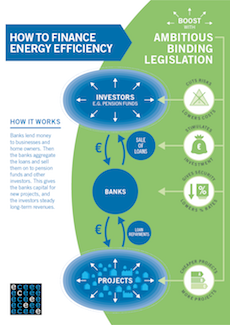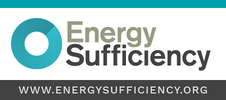Contributing to global climate goals: How can the gas infrastructure sector develop low-carbon and renewable solutions?
(EurActiv, 18 Feb 2021) According to the International Energy Agency (IEA), developing renewable gases is essential to advancing energy sector decarbonisation. The European Commission states in its Energy System Integration, Hydrogen and Methane emission reduction strategies that renewable gas will be critical for the transformation of the energy system.
In the effort to reach net-zero emissions by 2050, gas infrastructure seeks to transport decreasing quantities of natural gas, making way for increasing quantities of renewable and decarbonised gases produced at the local level. Several viable solutions, in various stages of commercialisation, to facilitate renewable gases production and injection into gas networks exist today.
Existing gas infrastructure brings essential flexibility and supply security for energy systems. By design, they are flexible and provide a cost-effective and reliable way to store renewable energy for long periods of time and dispatch it to meet peak demand.
Renewable gases can decarbonise all types of uses: manufacturing, industrial process and long-haul applications for freight, marine and aviation. Therefore, developing those fuels, such as biomethane and hydrogen, is seen as important to reach carbon neutrality by 2050. And this is why countries are increasingly establishing binding targets of renewable gas production and procurement. France and Québec have set a target of injecting 10% of renewable gases into the natural gas system by 2030.
See also eceee Press release: Don't rely on direct hydrogen use to decarbonise buildings, broad coalition of stakeholders tells the EU
External link
More Related News
hydrogen
12 Apr 2024: Shift to hydrogen networks: EU Parliament adopts laws for new gas era
8 Mar 2024: Germany's plans for a hydrogen network are oversized, critics say
13 Feb 2024: Will hydrogen overtake batteries in the race for zero-emission cars?
6 Feb 2024: Berlin agrees diminished plan for hydrogen back-up power plants
30 Jan 2024: Green hydrogen is the only viable route for aviation and shipping
18 Dec 2023: Making sense of green hydrogen costs and recent market developments in Europe
28 Nov 2023: The last piece in the EU’s hydrogen policy puzzle: grid ownership rules
13 Oct 2023: Biden selects 7 hydrogen hubs across 16 states for $7 billion in US grants
29 Sep 2023: Grid fees remain key sticking point as EU finalises hydrogen rules
22 Aug 2023: India government sets emission limit for hydrogen to qualify as ‘green’
20 Jul 2023: Gas boiler lobby trying to delay UK’s heat pump plans, leak shows
20 Jul 2023: EU and Argentina strike gas, hydrogen & renewables deal
4 Jul 2023: Biden's green hydrogen plan hits climate obstacle: Water shortage
30 Jun 2023: Spain raises bet on green hydrogen, biogas in draft energy plan
15 Jun 2023: Sweden aims to break deadlock on EU’s renewable energy law
2 Jun 2023: First hydrogen bank auction will help gauge market, EU Commission says
30 May 2023: German government agrees to build “core” hydrogen grid
22 May 2023: Running a hydrogen plane could be cheaper than traditional aircraft by 2035
12 May 2023: After court blocks renewables push, US promotes carbon capture & hydrogen
5 May 2023: Hydropower: EU energy transition’s other sticking point
17 Apr 2023: Europe’s green hydrogen rush risks energy ‘cannibalisation’ in Africa, analysts say
7 Mar 2023: ‘Green Hydrogen’ would squander renewable energy resources in Massachusetts
7 Mar 2023: Japan to spend $2.35bn on turning Victorian Latrobe valley coal into ‘clean hydrogen’
21 Feb 2023: It’s not just about the colour: too much hydrogen is unsustainable
14 Feb 2023: EU defines what makes hydrogen ‘green’
14 Feb 2023: Germany welcomes EU’s new green hydrogen rules, activists divided
3 Feb 2023: Nine EU countries want low-carbon hydrogen included in bloc’s renewables goals
30 Jan 2023: EU buildings directive in turmoil amid push for hydrogen heating
27 Jan 2023: France, Germany aim for ‘common roadmap’ on clean hydrogen
13 Jan 2023: Oil majors investing 8 times more in biofuels than hydrogen
6 Dec 2022: Long-awaited EU rules on renewable hydrogen expected next week
2 Dec 2022: EU Commission greenlights ‘unsustainable’ hydrogen plan
29 Nov 2022: Paris and Berlin set aside differences on ‘renewable’ vs ‘low-carbon’ hydrogen
8 Nov 2022: Portugal on track to bring carbon neutrality goal forward to 2045
4 Nov 2022: Europe should shape the green hydrogen market now
3 Nov 2022: Google wants more restrictive ‘green’ hydrogen rules
17 Oct 2022: MEPs call for ‘coherent framework’ on clean hydrogen, including nuclear
3 Oct 2022: Dispelling the myths about hydrogen and heating
3 Oct 2022: Hydrogen heating: UK government at odds with scientists
26 Sep 2022: Hydrogen could ‘nearly double’ cost of heating a home compared with gas
19 Sep 2022: Why von der Leyen’s ‘European Hydrogen Bank’ is a bad idea
6 Sep 2022: Heating with hydrogen could double consumer bills, report warns
26 Aug 2022: Germany hypes green hydrogen alliance while shopping for Canadian fossil gas
15 Jul 2022: What is ‘renewable gas’ and is it really just around the corner?
15 Jul 2022: Over the rainbow: The role of hydrogen in a clean energy system, explained
7 Jul 2022: Shell to build Europe’s largest renewable hydrogen plant
3 Jun 2022: Austria’s new hydrogen strategy slams use in heating, transport
23 May 2022: Hydrogen industry scores EU win with draft ‘additionality’ proposal
10 May 2022: Spain becoming one of Europe’s new hydrogen hubs, says von der Leyen
3 May 2022: The road to green hydrogen certification – and the potholes to be avoided
2 May 2022: Hydrogen will be ‘pivotal element’ in future economy, says EU climate chief
2 May 2022: Germany signs hydrogen cooperation agreement with India
25 Apr 2022: Hydrogen taxis could be the next big thing
24 Feb 2022: Airbus to test hydrogen jet engine in step towards zero emission aviation
18 Feb 2022: Experts sound the alarm on oil sector’s blue hydrogen push
4 Feb 2022: Explainer: the many shades of hydrogen
17 Jan 2022: German government disavows blue hydrogen
3 Dec 2021: €2 billion ‘Clean Hydrogen Partnership’ signals move away from hydrogen cars
2 Dec 2021: Siemens on track for long-range hydrogen-powered trains
30 Nov 2021: ‘Let’s reach for the stars’: EU aims for green hydrogen below €2/kg by 2030
18 Nov 2021: EU plans single database to certify carbon content of hydrogen, low-carbon fuels
18 Nov 2021: Heating homes with hydrogen fails on economic and climate merit: report
15 Nov 2021: The role of electrolytic hydrogen in the clean energy transition
9 Nov 2021: EU, India eye deeper cooperation on solar, green hydrogen
19 Oct 2021: Scientists warn against global warming effect of hydrogen leaks
8 Oct 2021: Spanish energy tax threatens EU’s green hydrogen plans, industry warns
1 Oct 2021: EU lawmakers vote to prolong fossil fuel gas subsidies until 2027
2 Sep 2021: We can’t build our way out of the environmental crisis
30 Aug 2021: Summer controversy illustrates polarisation of hydrogen debate
26 Aug 2021: UK’s hopes of boosting hydrogen trade hobbled by Brexit
12 Jul 2021: Europe could save €2 trillion by 2050 with low-carbon hydrogen, says report
21 Jun 2021: Green hydrogen: robbing ‘electricity Peter’ to pay ‘transport Paul’?
18 Jun 2021: ‘Hydrogen valley’ projects sprout up across Europe
7 Jun 2021: ‘From champagne to table water’: hydrogen sector aims for drastic price cuts by 2050
25 May 2021: Spain positions itself to be Europe’s green hydrogen hub
21 May 2021: Report: Low-carbon hydrogen production needs 400 1GW nuclear reactors
11 May 2021: Germany charges ahead in decarbonising domestic flights with new e-fuel roadmap
6 May 2021: Using hydrogen fuel risks locking in reliance on fossil fuels, researchers warn
20 Apr 2021: Pipe dream: alleviating energy poverty with hydrogen
13 Apr 2021: Energy efficiency must apply across all renewables, EU Commission says
8 Apr 2021: Energy ministers urge for regulatory framework on hydrogen
25 Mar 2021: How to decarbonise heavy industry: From quick wins to long-term solutions
19 Mar 2021: Don't believe hydrogen and nuclear hype – they can’t get us to net zero carbon by 2050
4 Mar 2021: Renewable industry coalition launches ‘policy charter’ to scale up green hydrogen
25 Feb 2021: Global gas firms target industrial ‘clusters’ for first hydrogen clients
5 Nov 2020: Emissions from energy sector likely to rebound from COVID-19, Capgemini warns
31 Aug 2020: German-Russian resources forum discusses joint hydrogen economy
18 Jun 2020: UK jumps on hydrogen railwagon
28 May 2020: Danish groups team up to deliver green hydrogen for transport fuel
4 May 2020: Australia to pour $190 mln into hydrogen projects
20 Apr 2020: UK gas plans a carbon-free future with hydrogen
24 Jan 2020: Carmakers renew calls for recharge revolution, as grim sales figures loom
Renovation wave
7 Dec 2023: How innovation is shaping the future of building renovations
12 May 2023: The people behind the buildings: Why we must get it right in the EPBD
18 Apr 2023: The struggle for Europe’s green construction norms
20 Feb 2023: Green housing must be affordable and inclusive for all
10 Feb 2023: An EU Renovation Loan can unlock €2 trillion of future energy savings
5 Dec 2022: Campaigners push EU-backed ‘renovation loan’ to decarbonise buildings
8 Jul 2022: European cities call for more staff, resources to decarbonise buildings
21 Jun 2022: Spend wisely: Use cohesion funding for energy renovation
20 Jun 2022: ‘Renovictions’ loom as EU aims to boost building renovation
20 Dec 2021: EU countries told to set up ‘one-stop-shops’ to help homeowners renovate
17 Dec 2021: EuroACE: News standards in EPBD revision could enable green transition for buildings
16 Dec 2021: EU confronted with lack of skilled labour to support building renovation wave
13 Dec 2021: EU warned against watering down climate ambition in buildings law
9 Dec 2021: Energy saving schemes need better targeting at poorest households, experts say
29 Nov 2021: Policies to mitigate high energy prices should fast-track building renovation
25 Nov 2021: LEAK: Draft EU law introduces new standards to decarbonise buildings by 2050
25 Nov 2021: A piecemeal approach on energy standards for buildings won’t work
19 Nov 2021: Deep renovation should be standard and included in EPBD – study
11 Nov 2021: No more time for half-measures on renovation
27 Oct 2021: Gas prices: keep calm and renovate buildings
27 Oct 2021: Green mortgages to help EU achieve climate goals
25 Oct 2021: Soaring energy prices put spotlight on Europe's draughty buildings
9 Sep 2021: It’s high time to make the EU’s buildings directive fit for 2030 and beyond
3 Sep 2021: New report: EPBD revision a ‘make-or-break’ opportunity
31 Aug 2021: Our renovation dream needs a reality check
22 Jul 2021: France to capitalise on ‘resounding success’ of green renovation
8 Jul 2021: EU bets on energy savings, greener buildings to meet climate target
5 Jul 2021: Why the renovation wave matters more than the EU knows
22 Jun 2021: Why a carbon tax is the most effective price signal for the building sector
17 Jun 2021: EU energy ministers support doubling renovation rates by 2030
15 Jun 2021: Fit and fair: The case for a European fund for targeted renovation
10 Jun 2021: EU’s building renovation wave hits administrative snag
3 Jun 2021: Will the Renovation Wave leave Europe’s poorest on the shore?
3 Jun 2021: EU renovation wave needs ‘major changes’ to be successful
3 May 2021: Consumers will only renovate their homes if it’s easy and affordable
26 Apr 2021: Sweetening the deal for heat decarbonisation
22 Apr 2021: Energy-efficient buildings should be ‘new normal’, says EU’s Simson
18 Mar 2021: EU’s green building push risks driving homelessness, activists warn
15 Mar 2021: Abolition of energy-saving certificates worries French building sector
12 Mar 2021: Renovation strategies will not deliver net-zero by 2050
8 Mar 2021: National renovation plans falling short of EU’s 2050 climate goal: study
26 Feb 2021: Retail real estate needs Paris-proof decarbonisation strategy – new report
25 Feb 2021: EU countries back green building renovations, but quiet on binding standards
11 Feb 2021: The European Bauhaus, an opportunity to shift paradigms and shape our buildings
1 Feb 2021: EEFIG plenary 9–10 Feb open to all interested in financing efficiency
21 Jan 2021: French citizens want better homes. Why are politicians standing in their way?
17 Dec 2020: Planet-warming emissions from buildings put climate goals at risk
14 Dec 2020: The Renovation wave should kick-start a just healthy building transition in Europe
10 Dec 2020: EU Taxonomy proposals clash with Renovation Wave
4 Dec 2020: ‘Complete overhaul’ of buildings needed to meet EU’s 2030 climate goal
9 Nov 2020: Energy-efficient building renovation: a Franco-German challenge
6 Nov 2020: Energy-efficient building renovation: a Franco-German challenge
6 Nov 2020: Untapping multiple benefits to speed up renovation wave
6 Nov 2020: BPIE report maps path forward for the European Renovation Wave
29 Oct 2020: This is the moment to renovate your buildings, EU tells member states
22 Oct 2020: Will the Renovation Wave benefit the energy poor?
15 Oct 2020: EU launches ‘renovation wave’ for greener, more stylish buildings
12 Oct 2020: Building for a new Europe
5 Oct 2020: Energy performance in buildings is key to meeting 2030 emissions target
10 Jul 2020: Why national building renovation plans are key for the recovery
29 Jun 2020: Pushing water uphill: Putting power behind the renovation wave
18 Jun 2020: Why the EU must renovate to recover
16 Jun 2020: Rebuilding Europe: Deep energy renovation should be the heart of EU economic recovery
11 Jun 2020: Green building advocates ‘underwhelmed’ by EU recovery plan
21 May 2020: Heating electrification amplifies need for efficient buildings, experts say
14 May 2020: Confined life under COVID-19 focuses global attention on the need to renovate homes
7 May 2020: EU building ‘renovation wave’ set for launch in September
17 Apr 2020: New action plan for renovation and economic recovery by BPIE










